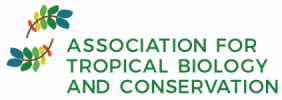Asian tropical forests are amongst the most diverse on the planet, a richness that belies the fact that they are dominated by a single family of trees, the Dipterocarpaceae. Many other families contribute to Asia’s natural diversity, but few compare to the dipterocarps in terms of the number and variety of species that occupy the forest canopy. Understanding the ecology and dynamics of Asian forests is therefore, to a large extent, a study of the Dipterocarpaceae. This book synthesises our current knowledge concerning dipterocarps, exploring the family through taxonomic, evolutionary, and biogeographic perspectives. Dipterocarp Biology, Ecology, and Conservation describes the rich variety of dipterocarp forest formations in both the ever-wet and seasonal tropics, including the less well known African and South American species. Detailed coverage of dipterocarp reproductive ecology and population genetics reflects the considerable research devoted to this subject, and its particular importance in shaping the ecology of Asian lowland rain forests. Ecophysiological responses to light, water, and nutrients, which underlie mechanisms that maintain dipterocarp species richness, are also addressed. At broader scales, dipterocarp responses to variation in soil, topography, climate, and natural disturbance regimes are explored from both population and community perspectives. The book concludes with a consideration of the crucial economic values of dipterocarps, and their extensive exploitation, discussing future opportunities for conservation and restoration. This will be a useful resource for senior undergraduate and graduate courses in tropical forest ecology and management, as well as professional researchers in tropical plant ecology, forestry, geography, and conservation biology.
Dipterocarp Biology, Ecology, and Conservation
- PhD Position in Landscape Planning – Singapore
- Ruaha Carnivore Project Field Operations Manager, Tanzania




